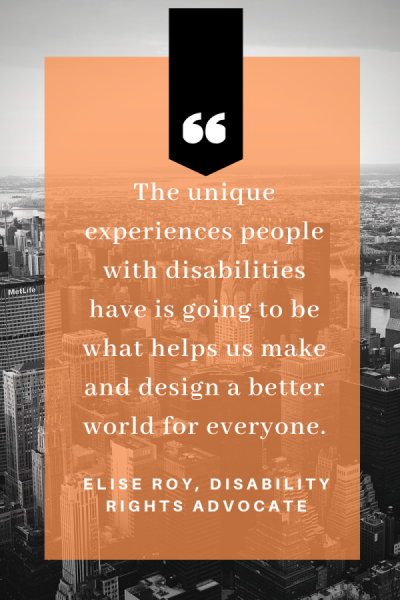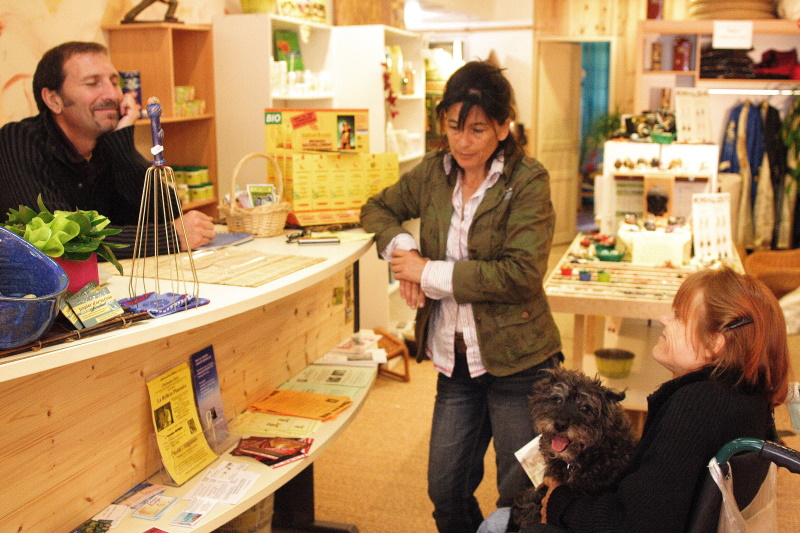 In her 2016 TED Talk, disability rights advocate Elise Roy said:
In her 2016 TED Talk, disability rights advocate Elise Roy said:
The unique experiences people with disabilities have is going to be what helps us make and design a better world for everyone.
The concept Roy describes is known as universal design, an idea wherein designers strive to create environments that empower all people to fully participate in society.
It’s different from accessible design (which is, in part, prescribed by law to allow those with disabilities to access goods and services) in that it takes a more holistic approach, ensuring that everyone has equal access to places, products and services without the need to use special adaptations or equipment.
Why Universal Design?
The primary answer is because, as Roy says, it can help make our world a better place for everyone.
From a business standpoint, the increasing diversity – in age, ability, language and culture – of our country’s population makes universal design a good investment for retail businesses. Incorporating universal design into your retail space gives you an opportunity to reach more potential customers and clients and to stand out from the competition as a business that cares about your community.
Principles of Universal Design
The principles of universal design were developed by a consortium of 10 architects, designers and engineers in 1997, under the leadership of architect Ron Mace. They follow the theme of empowerment and inclusion, and they apply both to the built environment and to products and services, including: equitable use, flexibility in use, simple and intuitive use, perceptible information, tolerance for error, low physical effort, and size and space for approach and use.
Incorporating universal design into your retail space doesn’t have to be difficult or expensive but translating these principles into real-world retail settings requires some thought and planning. As you begin to plan your retail space design, consider these steps:
- Identify your potential customers, clients and employees and how they are likely to interact with your business.
- Consult a variety of potential users of different ages, sizes and levels of ability for ideas to reduce barriers and make your space more useable for people of all abilities.
- Plan to evaluate and adapt your space as your business grows and serves more clients and customers.
Using Universal Design Principles in the Retail Setting
There are lots of easy options to make your business a more useful, welcoming place for everyone. The specific approaches you and your architect take will, of course, depend on your industry, but here are a few simple ideas that can work for many businesses, large or small:
- Provide electronically adjustable tables
- Provide counters, displays and fixtures at a variety of heights
- Provide customer-adjustable lighting for displays
- Provide adequate shading to reduce glare from windows and doors
- Provide resting points (including space for setting down parcels) at several intervals in large spaces
- Provide seating in waiting areas (including checkout or near exits for those waiting for transport)
- Provide stepstools and reaching tools for high shelves
- Provide signage in multiple languages & pictograms, where possible
- Place signage for a variety of sightlines
- Provide clear visual cues (using color or pictograms, for example) and tactile cues to direct customers to important locations/services/products
- Use uncluttered and consistent flooring and paving surfaces
- Provide handrails at points with steps or other transitions
- Provide large-print literature, instructions and menus
- Avoid using scented cleaning products or other scented items
- Avoid playing loud or jarring music
- Ensure announcements are clear but not too loud, abrupt or distorted
- Ensure key exterior signage (hours of operation, business name and street number) is large and in easy-to-read typeface; add Braille signage
- Place safety decals on glass doors or large windows
- Paint curbs and ramp edges yellow and step edges in a color that contrasts with other flooring
- Provide adequate storage within comfortable reach
- Provide a variety of containers that allow employees or customers to carry, pull or push large items
In addition, pay attention to the overall health and wellness quotient of your space.


